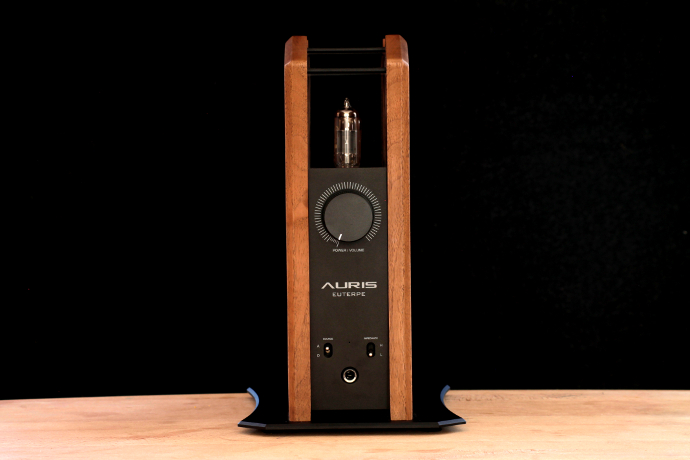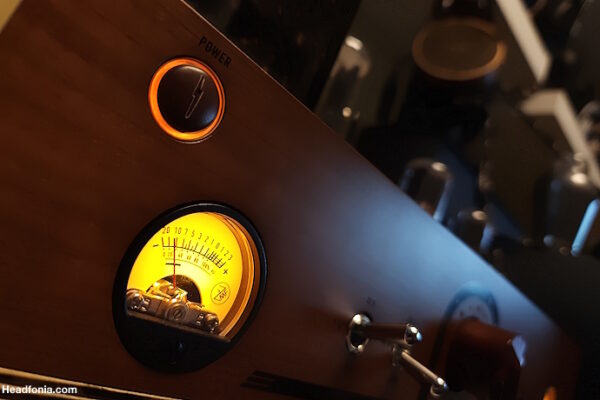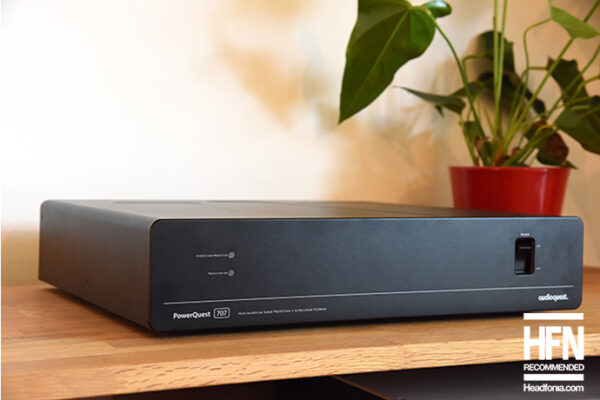Tube Rolling
For those of you who want to play around with the signature by rolling some tubes. There’s some room for that too. I have on Lievens recommendation replaced the stock JJ ECC81 tube with a NOS manufactured by Mullard. I have had good experiences with Mullard so far, so my choice fell on one of theirs again.
When replacing the stock ECC81 with this particular one, you get a richer tone. More body in the midrange and an overall fuller sound. You gain more warmth and loose some treble clarity and hardness. Bass gets more texture, precision and extra weight. The sound gets more immersive, thicker, smoother and more musical if you will. Euterpe gets lusher and richer from top to bottom.
I enjoyed this tube more than the stock JJ ECC81 and since its arrival have put it in as main set-up.
As mentioned earlier, the EL95 and PL95 tubes are almost identical. Their only difference is in higher Voltage. From a sound perspective these are pretty much the same. I couldn’t hear any difference when I installed my Mullard EL95’s.
Tube rolling is a lot of fun, but you have to stay within specifications of the original tube when you perform this act. The JJ Electronic ECC81 (12AT7) is a dual triode, medium gain pre-amplifier tube. A more precise spec-sheet can be found here: https://drtube.com/datasheets/ecc81-jj2003.pdf
If you want to read more about these tubes, check out Lievens Auris Ha2-SE review, as it uses the same tubes.
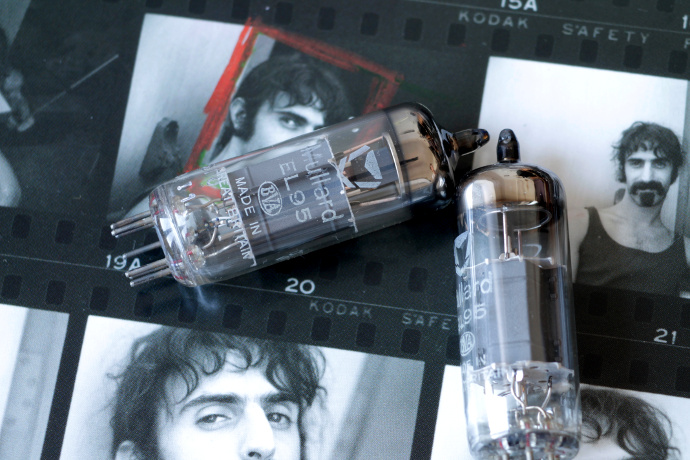
Auris Audio Euterpe
Pairings:
With 0.9 Watts RMS output power, Euterpe does have enough to drive most headphones to very loud volumes. As we all know, output power is not everything. It really depends on the circuit implementation to have a great sounding amplifier.
Euterpe is designed for full-sized headphones. I have almost exclusively used over ears for this review. In Ears have only been brought out to check the noise floor of the Auris. Most of my inventory concentrates on planar magnetic headphones. Just shortly before Euterpe set foot in my apartment, I sold my HD800S as it hasn’t seen much use. Thankfully, I still have my early production AKG K240 Sextett to check how Euterpe handles hard to drive dynamic headphones.
I find Euterpe to pair better with headphones that come with a more organic and fuller presentation themselves. Overly analytical headphones such as the Diana Phi aren’t a good match in my opinion. I have used the stock tube configuration for this section, as it makes no sense to describe a pairing out of its factory setting.
Meze Audio – Empyrean
The Empyrean is definitely one of the most talked about headphones in the recent months. I got mine as a birthday present to myself. You gotta treat yourself every once in a while.
The Meze has an overall slightly darker sound, and I’m using the leather pads more than the velour ones. I like my bass a little tighter and faster. With the Euterpe you get an intimate pairing, that does not excel in sound stage dimensions. It’s a concentrated presentation that puts a quality listening experience with high levels of body and soul to your ears. I don’t turn the volume potentiometer much past 9 o’clock, as that is more than enough for my listening comfort.
You get a thicker midrange, with more weight in the notes. Lower pitched instruments particularly are heavier and denser. Bass notes have good body, dynamics and are of high quality to me. There’s plenty of resolution down low with good texture and layering.
Treble is on the calmer side, but still well pronounced. Highs have decent clarity and brightness, however, there are other headphones out there that put more decibels in that region. You get a lot of details and the Empyrean manages to put them all into their place. Imaging is one of the things the Empyrean does exemplary. It places all instruments carefully in the room and gives each musician enough room to breathe. Even during information-overloaded segments in music, the Empyrean stays focussed and keeps its structure.
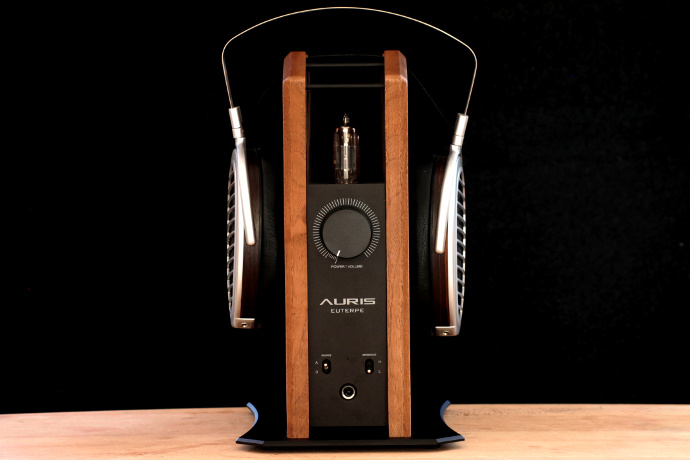
Auris Audio Euterpe
HiFiMAN – HE1000se
The volume dial does not surpass 10 o’clock before it gets too loud for my taste. So there’s still enough room on the pot to go even higher for those that enjoy their music loud.
With the HE1000se you get a wonderful sounding combo. There’s plenty of body, good dynamics and great resolution and texture. Bass goes deep with a nice and full sound. Sub-bass is well formed and enjoys good rumble.
Something this combination just oozes of is transparency. The mids sound open, emotional and most of all harmonic. I love this headphone to bits, and with the Euterpe it just doesn’t stop. It’s fast, it’s precise and it is oh so musical. Body, texture, layering and speed are all there at the top of their game.
The top end is fast, energetic and clean. It’s well extended and precise, never hard or sibilant. The richness of this pairing is absolutely gorgeous and makes me just want to keep enjoying my music. Vocals, male and female, have the right kind of emotions and weight. The stage is wide and deep with a holographic sound, where the bands are performing right in front of you.
On a technical level the pairing convinces me as well. Resolution is high, rendering very fine and precise and instrumental separation is achieved very well. I can pinpoint every musician in the room, and every note appears clean and clear. I never have the feeling that something gets overlooked or smudged. This is just a wonderful pairing I can dive into on a long run.
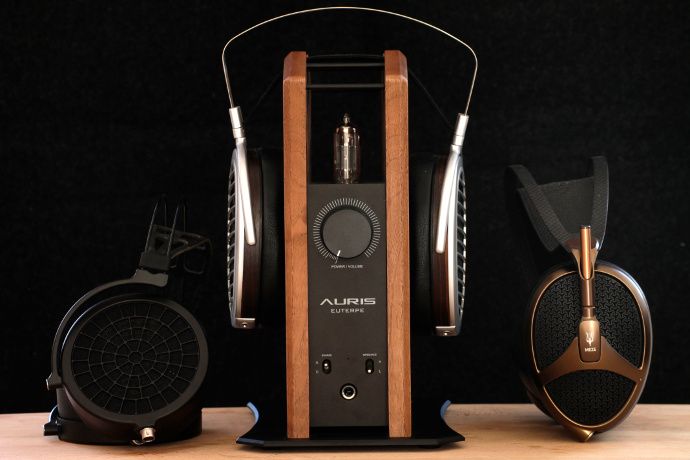
Auris Audio Euterpe
MrSpeakers – Ether 2
The Ether 2 is one of the headphones that surpasses the 10 o’clock point on the volume pot, although not by much.
There is good low end drive in the Ether 2 when paired with the Euterpe, however I feel there’s weight missing. Bass can sound slightly anaemic and thirsty for more substance. The lows are presented a touch south of neutral with a tight grip.
What this combination does really well is create a holographic stage. The music seems to float on a pitch black background. The layering here is impressive and this goes hand in hand with transparency. It definitely brings a lot of that to the table. The Ether 2 does capture many details and information and displays them in an upfront manner.
Midrange is lighter in body and weight, but delivers good levels of speed. It’s articulate and fast, with great resolution. Where the Ether 2 succeeds in this pairing is in creating a nicely wide and deep stage, and putting musicians into place. Imaging is very good, as each instrument is portrayed with precision. Mids are neutral in richness, they are not overly dry nor rich.
Due to the missing low end action, upper mids and lower treble can become a bit forward sounding. Which can result in them having a metallic timbre at times. Overall I’m left with mixed feelings about this pairing. On one hand it creates an impressive listen, but on the other the tonal balance is just off.
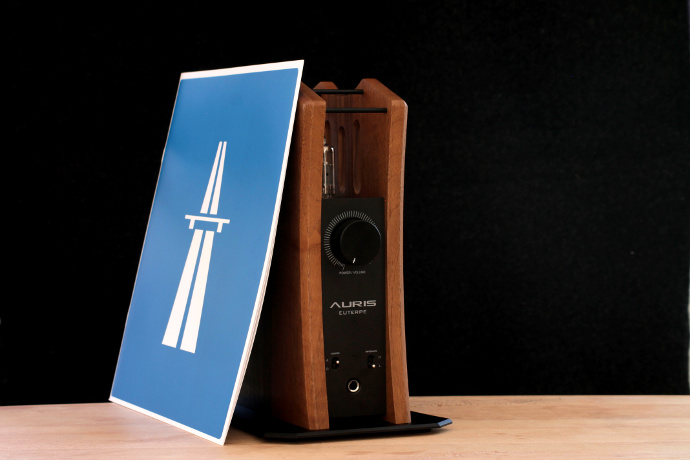
Auris Audio Euterpe
AKG – K240 (Sextett)
Bloody hell, I did not expect Euterpe to handle these that well. At 600 Ohms and 94db/mW the AKG’s aren’t exactly easy to drive, but Euterpe does get them to my comfort levels and way above. I set the impedance to high and the volume knob goes closer to 11 o’clock now.
The Sextett is one of my headphones, that is pretty picky when it comes to amplification. It needs power, loads of it, but also the right kind of it. It’s no easy task to get the dynamic transducer and the six passive radiators to work well together.
Bass is tight and controlled, just like with the Ether 2 it’s a bit lighter. The Sextett is a more balanced headphone, that does not particularly favour any specific frequency range. It puts good body and emotion into its sound. The midrange is open and sounds very precise to me. The Sextett does not sound super-rich, nor does it sound dirt-dry either. It’s placed somewhere in between, to sound realistic enough.
With amplifiers that aren’t capable to handle the Sextett, I usually get a wall of sound. With Euterpe this isn’t the case though. Instruments are well separated, resolution is good and layering done well. Driven right, the K240 can put out a lot of details, and that’s what is happening with the Auris. Informations are resolved with care and brought out with accuracy.
Euterpe makes these vintage headphones from the early 1970s really sing. I mean, sure they are not close to in performance to flagships of today, but for the price I snagged them, these are ridiculously great. Sometimes it just works.
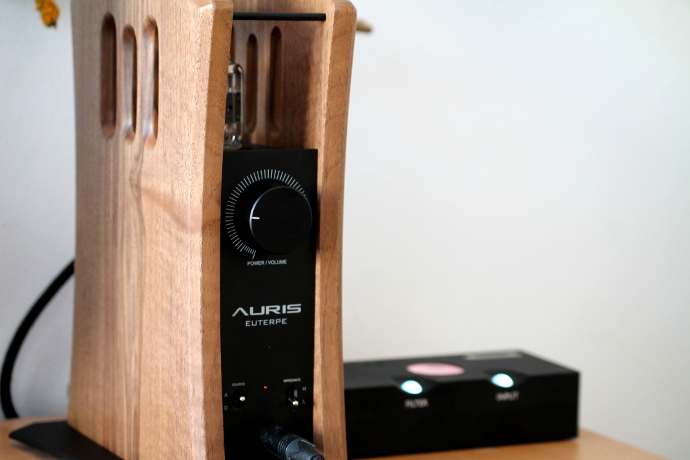
Auris Audio Euterpe
Conclusion:
Back in the day when Lieven reviewed the HA2-SE, he called it the most musical tube-amp he has heard at that time. On paper the HA2-SE and the Euterpe aren’t too different. They share a lot of their internal design DNA. When I heard about an upcoming starter amp from Auris, I was highly intrigued. Thankfully, I got the opportunity to get to know this gem. Although I would still love to compare the Euterpe against its bigger sibling one day. Unfortunately there is no dealer for them in my region, looks like a trip to Belgium has to be booked for that.
Over the last couple of weeks, Euterpe has given me many hours of listening pleasure and made me relive my tube-rolling days. The Auris manages to drive all my headphones, even the tricky ones. Euterpe not only delivers enough power to get my headphones loud enough, it also delivers the right kind of it, to make them sing.
How Auris have managed to create an amplifier with a noise floor that low still puzzles me. It is also beautifully finished and even girlfriend approved. The fact that it doubles as a headphone stand is a nice bonus. The real strength of Euterpe definitely is in its amp-section. With the internal DAC I am missing some of the magic. So bring on a high end DAC and you’ll be happy for sure.
Euterpe is my first higher-end tube amplifier, and it definitely has created a thirst for more. Colour me impressed.






